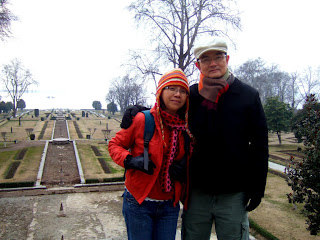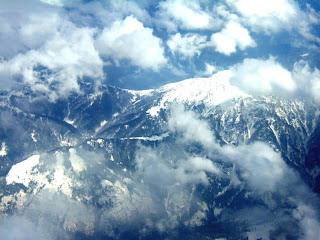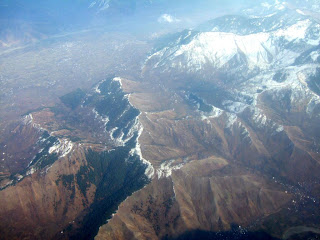
Shalimar Bagh, also known as Garden of Love, was laid out by Mughal Emperor Jehangir for his wife Nur Jahan in 1616 and later extended by Shah Jahan during his reign between 1628-1658. Shalimar Garden covers an area of 182 x 539 m and originally was a village built by ancient ruler Paravara-ssana who used to live here when on visit to The Saint at Harwan. When the garden was first laid, it was named as Ferrrah Bakkash which means delightful.. There were 4 layers of terraces rising one above the other and the first terrace was reserved for the emperor and royal families while the fourth one was meant for royal ladies only.



Mughal Emperors always laid gardens with vast hillsides of excellent water bodies and decorated with flowering shrubs and trees. Fantastic view of Zabarwan hills at Mughal Gardens.


Mughal Emperors, due to nature of love for land, were very innovative and creative in designing gardens with existing landscapes, plantings and mixture of color texture and made it into a harmonious feature as if an exquisitely carved lawns with stepped terraces and water courses.



The pavilion in the middle of the tank at the first layer of terrace was built with black marble and served as a banquet hall. There was a canal supplied water from Harwan running through the garden lined with polished stones and with rows of amazing fountains.


Structures were supported by black marble fluted pillars and each main door had through view into other terraces.



The color of metal ceiling original design at one of the halls still remain vivid.



The Garden of Royal Spring, Cheshma Shahi, built by Emperor Shah Jahan in the year 1632, was the smallest among all Mughal Gardens with an area of 38 x 108 m only, but very well set up at the hillside above city level.

Cheshma Shahi was laid with aqueduct, terraces, waterfalls and fountains and grown with numerous fruit plants, Chinar trees and flowers.


The garden was watered by mountain spring and there also is a fresh water spring at the nearby shrine called Chasma Salinbi. The fresh spring inside the Garden is famous for its energizing digestive mineral water which was believed to have medicinal value.


There are numerous terraces with several fountains built right at through the garden center, overlooking the scenic Dal Lake and neighboring mountains



Cheshma Shahi was laid above Nehru Memorial Park and surrounded by vista of Dal Lake.


According to locals, the garden turns to color site in the month of May as all plants including fruit trees are fully blossom with flowers


The beautiful little entrance door of the garden and the lovely Kashmiri children in the garden. This is the only Mughal Garden in Srinagar that collects entry fee.


Meat skewer and Kashmir bread are the common food for locals, while going to mosque is a daily activity for family.



Mysterious and misty Srinagar at the evening.


Srinagar provides one of the best wetland for seasoning birds .



Srinagar is said to be more like a cottage town rather than a city.


An education institution and a mosque (pic 2) are among the commercial buildings.



All building structures are of two storey mainly using wood and bricks with designed windows, like those 60th century British houses.


There are no high rise buildings or modern buildings in Srinagar. Business transaction were done at the typical linked shops mostly in small scheme.




Leisure and serene township of Srinagar.



Jhelum River passed through the city and meanders through the valley. They are altogether nine bridges connecting two parts of the city.



Final security check right before boarding, at this little mobile scanning house, erected at the tarmac of the airport, before the aircraft.



As seen from flight, Kashmiri stays by nature and with nature.



Bird eye view of the beautiful landscape of Srinagar.



While saying goodbye, we captured once again the beautiful snow capping mountain ranges over the flight.

















No comments:
Post a Comment